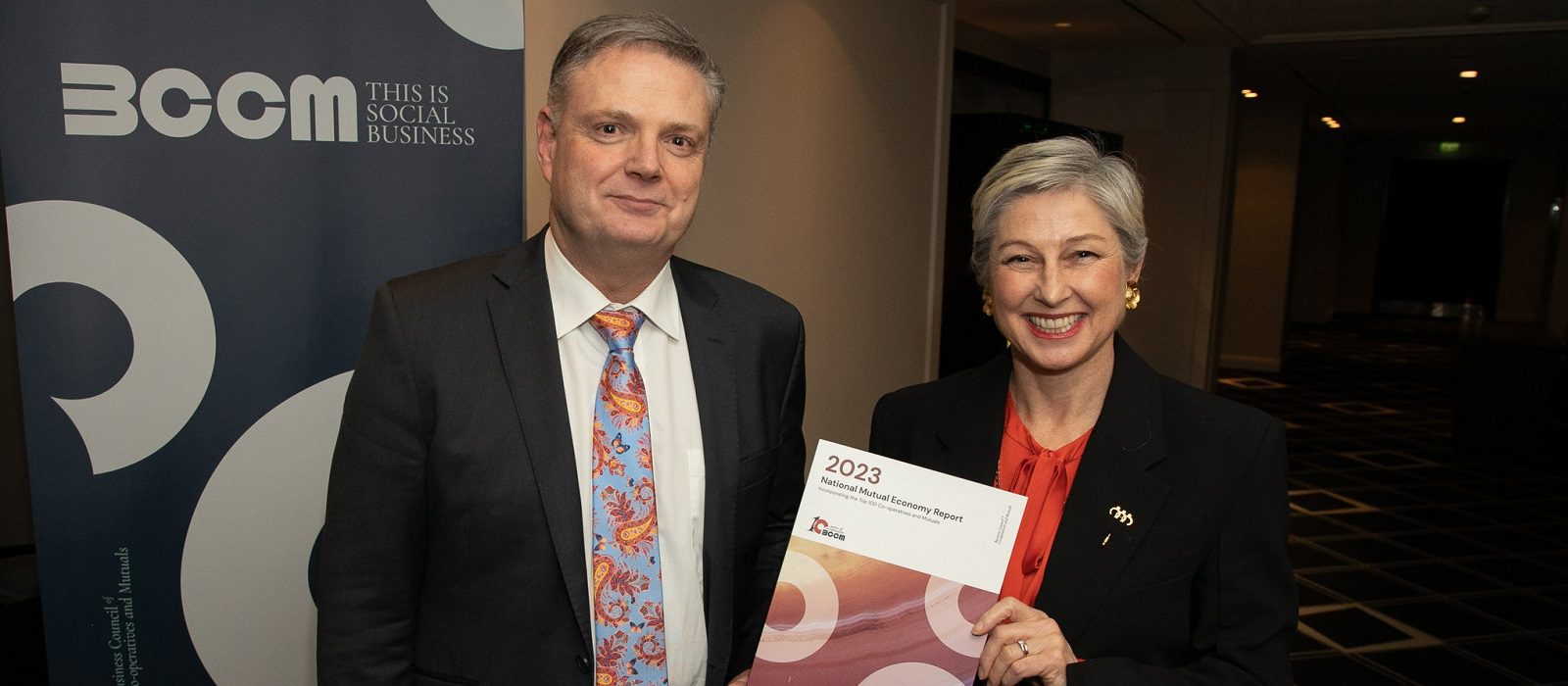According to the tenth annual National Mutual Economy (NME) Report produced by ICMIF member the Business Council of Co-operatives and Mutuals (BCCM), Australia’s top 100 cooperative and mutual businesses defied a raft of global and domestic economic headwinds to boost revenue by 10.8 per cent to AUD 37.7 billion in the 2022 financial year.
The report also showed that the sector recorded strong asset and earnings growth during the year.
Earnings across the top 100 cooperative and mutual businesses continued to grow at an average annual rate of 27.1 per cent, although profitability in the largest sectors of agribusiness, financial services, health insurance and motoring was impacted by global energy and commodity price volatility.
The Chief Executive Officer of the BCCM, Melina Morrison, said the report demonstrated the robust nature of member-owned businesses, which were well positioned to withstand periods of economic uncertainty due to their lean operating structures.
“With global instability, the post pandemic world and climate concerns looming large, cooperative and mutual enterprises are more vital than ever to lead the way towards sustainable and equitable futures,” Ms Morrison said.
“Coops and mutuals, although often overlooked, play a critical role in shoring up supply chains through investment in domestic infrastructure to improve sovereign capacity.”
Top 10 CMEs by turnover in FY2021-22
CBH (WA) AUD 6.23 billion
HCF (NSW) AUD 3.52 billion
Capricorn Society (WA) AUD 2.93 billion (of which ICMIF member Capricorn Mutual is the insurance arm of the business)
RACQ (QLD) AUD 2.05 billion
HBF Health (WA) AUD 1.86 billion
Australian Unity (VIC) AUD 1.36 billion
RAC (WA) AUD 1.23 billion (an ICMIF member)
Teachers Federation Health (NSW) AUD 863 million
RAA (SA) AUD 731 million
Catholic Church Insurance (VIC) AUD 726 million
The NME report, which is a barometer of the health of the sector, was launched last week in Sydney at a summit of CEOs from Australia’s top 100 coops and mutuals.
CEOs gathered at the summit will discuss a range of challenges facing the sector including opportunities to drive growth to achieve scale as well as how to measure the value created by member-owned businesses.
“Like other business sectors, Australia’s coops and mutuals are grappling with the challenges posed by geo-political events abroad as well as domestic pressures such as high interest rates and a tight labour market,” Ms Morrison said.
“Importantly, though, coops and mutuals have proved their resilience, continuing to perform strongly, just as they did through the pandemic and the floods and bushfires that impacted so many Australians in recent years.
“Longevity is a hallmark of this business model with 68% of the top 100 operating for more than 50 years.”
The number of cooperative and mutual businesses rose slightly during 2022, despite consolidation in key sectors such as banking and financial services.
There were 1848 coops and mutuals at the end of fiscal 2022, compared to 1832 at the end of the previous year.
The NME report showed that the greatest number of coops and mutuals were in the financial services sector, followed by health insurance and agribusiness.
The report found that Australia’s coops and mutuals had a combined active membership of 33.3 million (up from 31.7 million previously) and employed at least 76,000 people at the end of 2022.
While more Australians than ever are members of at least one coop or mutual, Ms Morrison said recent polling by the BCCM showed that most Australians were still largely unaware of the business model’s existence.
“Under-representation of coops and mutuals in University courses such as law, accounting and business studies has undoubtedly contributed to this lack of awareness,” she said.
“Given the solid performance and longevity of the businesses this was a missed opportunity to enlist the assistance of coops and mutuals to address cost of living and other mounting pressures on Australians,” Ms Morrison concluded.
The West Australian grain handling group CBH retained its position as Australia’s largest cooperative, with turnover of AUD 6.23 billion, a significant increase on the AUD 3.99 billion recorded in fiscal 2021 and a net profit of AUD 497.7 million. CBH is also Australia’s third largest privately owned business according to Ibis world Australia’s Top 500 Private Companies 2022.
CBH was followed on the top turnover table by health insurer HCF (AUD3.52 billion), automotive parts coop Capricorn Society, of which ICMIF member Capricorn Mutual is the insurance arm of the business (AUD 2.93 billion) and Queensland-based motoring club RACQ (AUD 2.05 billion).
Photo shows: Harry Robertson, Chief Financial Officer, HCF and Melina Morrison





